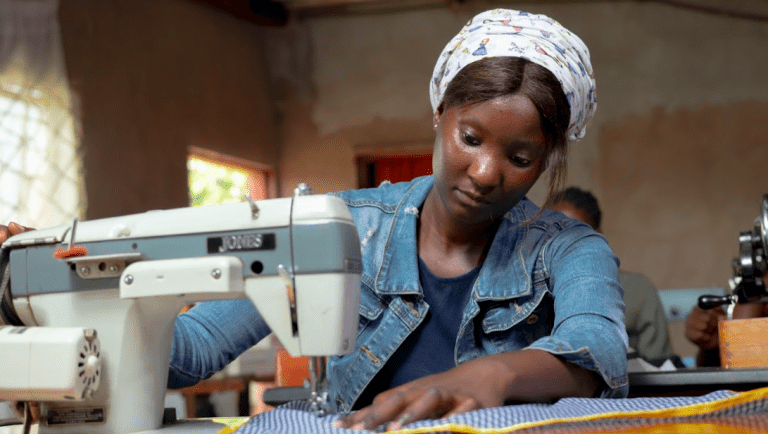News
Pact successfully concludes project in Zambia, helping children leave mines and return to school

At the end of 2023, Pact successfully concluded a three-year project to tackle child labor in artisanal and small-scale mining (ASM) in the Central and Copperbelt provinces of Zambia, which was funded by the London Metal Exchange. Pact initially conducted a series of baseline studies in Central and Copperbelt provinces to understand where, how and why children are engaging in mining activities, and the scope of the issue. Based on findings, Pact implemented a package of interventions to support children to access education, social services and vocational training to help them leave child labor in mining behind for good. The project also included sensitization and engagement activities for parents, caregivers and mining communities at large to reduce child labor.
Strong progress was made across five areas that discouraged children from involvement in mining activities. Empowerment initiatives, including Pact’s signature WORTH community savings and loan program, targeted vulnerable women with children at risk or involved in mining, enabling them to meet household needs, which drives many children into mining. Additionally, in addressing youth, who constitute most informal miners, the project improved access to vocational training, providing alternative, safer livelihood options such as tailoring, food processing, mechanics and hospitality.
The project also enhanced recreational and sporting activities to keep children engaged, another driver of their involvement in mining. These efforts were complemented by engaging awareness programs in the community on topics such as child labor and its effects. To ensure the sustainability of these efforts in line with Pact’s commitment to locally led initiatives, the project strengthened the government's response and coordination abilities by forming or reinforcing child protection committees. These committees were mainly composed of representatives from relevant government ministries, local police, civil society, media and human rights organizations, though members vary by district. Strengthening these committees bolstered their capacity to identify and address child labor concerns in the mining sector through regular ongoing inspections.
Overall, Pact enrolled 110 youth in marketable livelihood programs working with mentors for vocational training. The project grew to include 465 WORTH members in 18 groups, with total income generated reaching $43,320. By the end of the project, all 18 groups were equipped with a suite of skills, including entrepreneurship. This economic empowerment enhanced group members’ capacity to care for their children’s basic needs, including education and health.
Pact distributed school supplies and uniforms and trained 70 teachers across schools in 7 districts on integrating child miners into schools by creating a more welcoming environment. Through child labor awareness programs, the project reached 3,959 children with messaging about the dangers of child mining. Overall, the project reached 6,456 people through all interventions and activities. Reports from District Education Board Secretaries indicated an increase in children’s school attendance during the project’s activities.
Pact has more than a decade-long expertise in responsible mining. Pact works to prevent dangerous and exploitative conditions that often lead to child labor and other human rights abuses. Currently operating in Africa and South America, Pact works in partnership with governments, industry, mining communities and artisanal miners themselves to make the industry formal, safer and more productive and equitable.